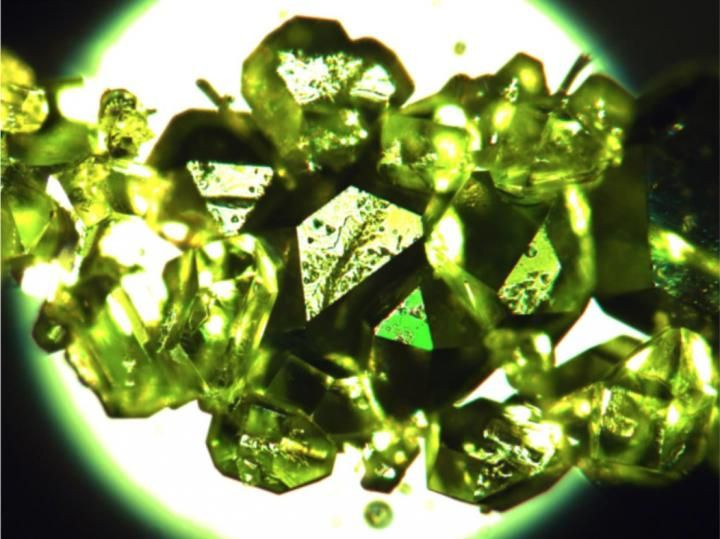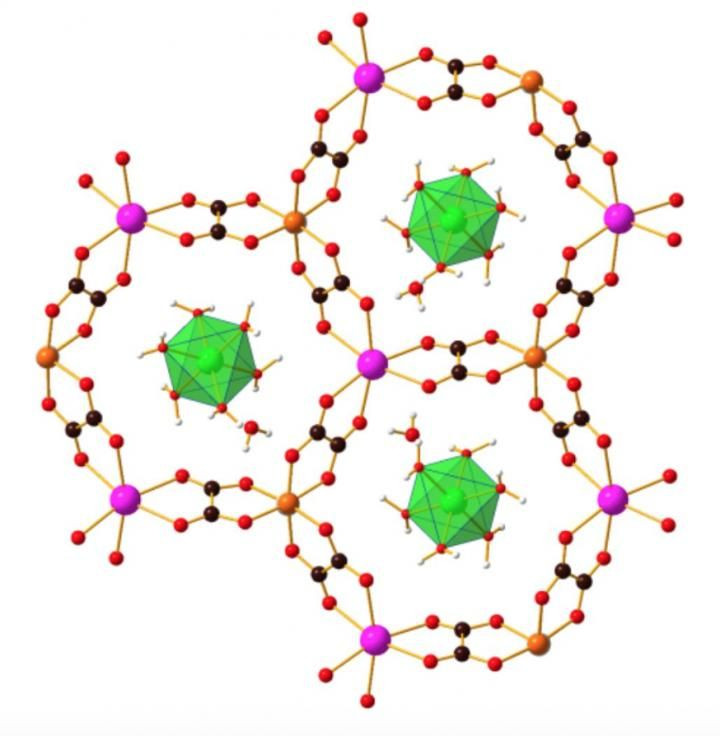Rare Siberian Mine Minerals Are The First ‘Metal-Organic Frameworks’ Found In Nature

Researchers have found that the minerals stepanovite and zhemchuzhnikovite — first discovered deep inside a Siberian coal mine nearly 70 years back — are unlike anything previously found in nature. The two belong to a class of porous solids known as “metal-organic frameworks” (MOFs) — a class of minerals scientists have, until now, only created in labs.
The discovery “completely changes the normal view of these highly popular materials as solely artificial, ‘designer’ solids,'” Tomislav Friščić, a professor at McGill University in Montreal and lead author of a study detailing the findings, said in a statement. “This raises the possibility that there might be other, more abundant, MOF minerals out there.”
Stepanovite and zhemchuzhnikovite, which were originally found between the 1940s and the 1960s in a coal mine deep below the Siberian permafrost, have an elaborate, honeycomb-like structure typical of MOFs. However, due to the limitations of the technology at the time, their internal structure could not be analyzed when they were discovered.

Then, in 2012, Friščić and his colleagues found a mention of the minerals in a Canadian mineralogy journal.
"With the help of a crystallographer colleague in Venezuela, they connected with two prominent Russian mineralogists: Sergey Krivovichev, a professor at Saint Petersburg State University, and Prof. Igor Pekov of Lomonosov Moscow State University," the university said in the statement. "Krivovichev and Pekov were able to obtain the original samples of the two rare minerals, which had been found decades earlier in a coal mine deep beneath the Siberian permafrost. The Russian experts were also able to determine the crystal structures of the minerals. These findings confirmed the McGill researchers' initial results from their lab synthesis."
What makes this discovery important is a unique trait MOFs have. These minerals act as “molecular sponges” that absorb gases such as hydrogen and carbon dioxide and can even store them for future use. This means they can have important applications in the field of carbon sequestration — a technique that seeks to remove heat-trapping carbon dioxide from the atmosphere and store it indefinitely.
The researchers hope that if more such minerals are discovered in nature, it may drastically boost research into lab-grown carbon capturing materials.
© Copyright IBTimes 2024. All rights reserved.






















